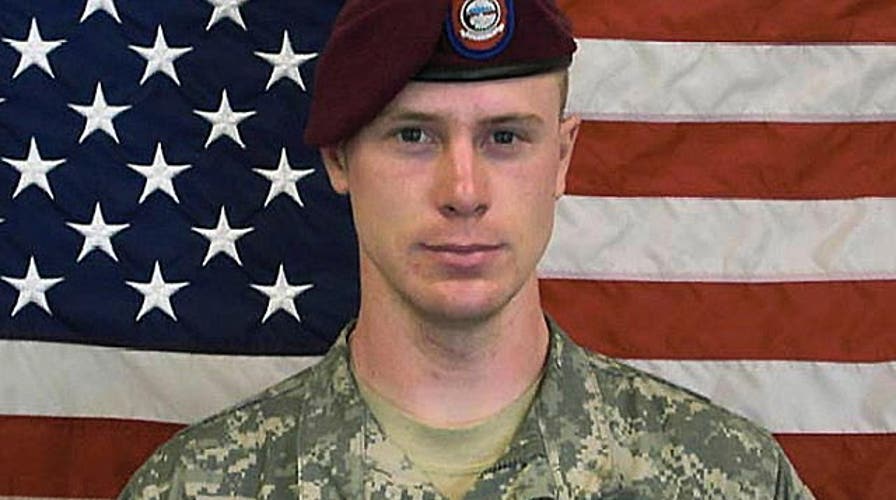Secret war logs on Bergdahl search revealed
Inside the search for Sgt. Bowe Bergdahl in the days and weeks after he walked off his base
This is a rush transcript from "On the Record," June 12, 2014. This copy may not be in its final form and may be updated.
JUDGE JEANINE PIRRO, 'ON THE RECORD' GUEST HOST: How exactly did the U.S. Army respond in the hours and days and weeks right after Sergeant Bergdahl walked off his base? Turns out, there is a classified military log leaked.
The "Wall Street Journal's" Jason Bellini has been combing through that secret log. He joins us now.
Good evening, Jason. What can you can tell us?
JASON BELLINI, THE WALL STREET JOURNAL: Hi there, Judge. I have been going through and there is fascinating details in there. This log starts at 9:00 in the morning on June 9th, 2008. That's when Bowe Bergdahl's unit reported that he was absent at morning "roll call." OK, so that immediately Army commanders order all units in the zone to do a roll call. Their troops and they order Bergdahl's unit, called Blackfoot, to do a search of all their vehicles, latrines, and also the Afghan military post that was at their base. They confirmed that Bergdahl was nowhere to be found.
And this is where you really see the military pull out all stops on that day and in the weeks to come to try to find him. The order comes down, all military assets are to be focused on the DUSTWUN situation. "DUSTWUN" standing for duty, status, whereabouts unknown. Within a few hours, you have got two predator drones covering the area. Multiple platoons are deployed to search for him, including a team with tracking dogs. And a plane is running to intercept Taliban radio transmissions. Here is what that yields. They pick up someone saying that they found an American soldier looking for someone who speaks English and who had a camera on him.
But, even with all the resources, planes, helicopters, boots on the ground being devoted in the search for Bergdahl, according to the documents, no new information was found right then. But a few weeks later, a presumed Taliban member is intercepted speculating that Bergdahl is a big shot, that's why they are looking for him. And then a report from a police source that a Taliban wants to trade 15 Taliban for the Americans. And there's fresh intelligence on his location. Then, in a village, where the next day members of 373 -- and that may stand for Task Force 373, an elite, covert Special Forces unit -- they descend on this village, clearing structures, questioning, detaining people. No sign of Sergeant Bergdahl. This document includes more leads and more reports of soldiers following him until they go cold.
So a lot of details in there about a very aggressive in the days and months after he went missing.
PIRRO: Jason, I understand and I'm curious as to whether you found out anything about this, that he was initially termed a deserter and then they pulled back and said no, we are going to just put whereabouts unknown, which is not a term that is familiar to anyone who has studied the Uniform Code of Military Justice.
BELLINI: According to this document, that was a term that they used, the latter term, that they do not --
(CROSSTALK)
PIRRO: Whereabouts unknown?
BELLINI: Whereabouts unknown. They use that from the very beginning. It's interesting that in none of these logs and none of these discussions, do they ever discuss why he might have left, what the situation was. They kept it very professional the whole way in this document that we see that was not meant to be seen by the public.
PIRRO: Very professional or very redacted.
All right, Jason Bellini, thanks so much.

